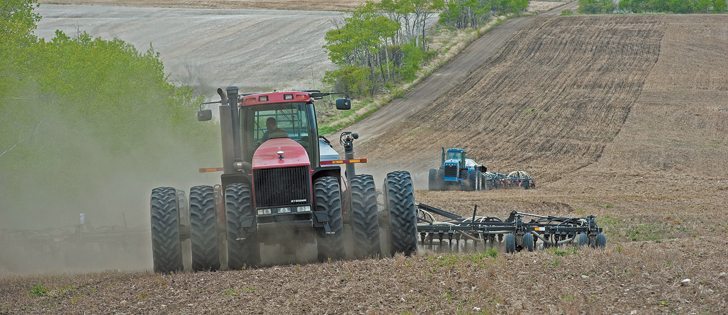Resurgent rotations | Production problems in 2012 could lead to more wheat acres
The rally that has lifted all crop prices this year gives many farmers a chance to cut their canola acreage next year and get back into better rotations, a number of observers say.
Canola production problems this summer have spooked thousands of farmers, and many would prefer to grow grain and other crops rather than once more squeeze their rotation to seed more canola.
“I think production experiences from this past year will start to affect acres, and focus farmers on the need to bring rotations back to reality,” said Charlie Pearson, markets expert with Alberta Agriculture.
Read Also

Why feds imposed EV tariffs
Moe and Kinew have a fight on their hands when it comes to eliminating the EV tariff. Canada has to worry about pissing off the U.S. and Mexico and hundreds of thousands of auto workers.
Errol Anderson of Pro Market Communications agreed.
“I really think the agronomic problems people had this year make some people reconsider their canola acres next year,” said Anderson.
Canola yields are disappointing farmers who have been getting comfortable with steadily increasing year-on-year gains.
Lots of farmers who were harvesting 40 bushels per acre are getting 30 bu. this year, many experts say.
Exactly why canola has underperformed in the field is hard to explain, other than that many factors came together.
“Seventy-five to 80 percent did not get the rains when they needed it,” said broker Allan Johnston of Welwyn, Sask., about why many crops looked big and lush but yielded poorly.
Pearson said a string of challenges hurt the crop.
“It was too wet. Then it was too hot. Then there was sclerotinia and aster yellows,” said Pearson.
“Now to add insult to injury, we get these windstorms.”
At the same time, canola prices have failed to keep up to soybean prices, while wheat and feedgrains have done better.
That levels the playing field and gives farmers an incentive to put more acres into wheat next spring.
Wheat and feedgrain market prospects look better to many analysts, an impression that was not hurt by the September U.S. Department of Agriculture reports, which were generally seen as price neutral but confirmed extremely tight stocks for soybeans and corn and tightening stocks for wheat.
Wheat is easy to grow and market, and farmers are worried that they have pushed their canola rotations too far. As a result, it could be an easy choice next spring to reduce canola and increase wheat and barley.
“The wheat story is a slow, evolving positive story over time,” said Jon Driedger of FarmLink Marketing Solutions.
Wheat is unlikely to soar as high in the short or medium term as corn and soybeans have done because the world still has ample stocks of wheat.
However, if it keeps close to the gains in oilseeds the crop could steal acres back from canola.
Canola’s cycle of high prices and ever-increasing yields meant many farmers cut canola rotations from once every four or three years to once every two years. Shorter rotations encourage disease development. Many agrologists say farmers should never reduce rotations to less than once every three years, but the lure of big money from growing canola has been too enticing to resist.
However, if good money can be made off wheat as well, next year could offer farmers the best chance to clean up their rotations without sacrificing profitability.
“There’s a lot of interest in growing wheat again,” said John Duvenaud of Wild Oats.
















